Home>Articles>How Much Does It Cost To Remodel A Living Room
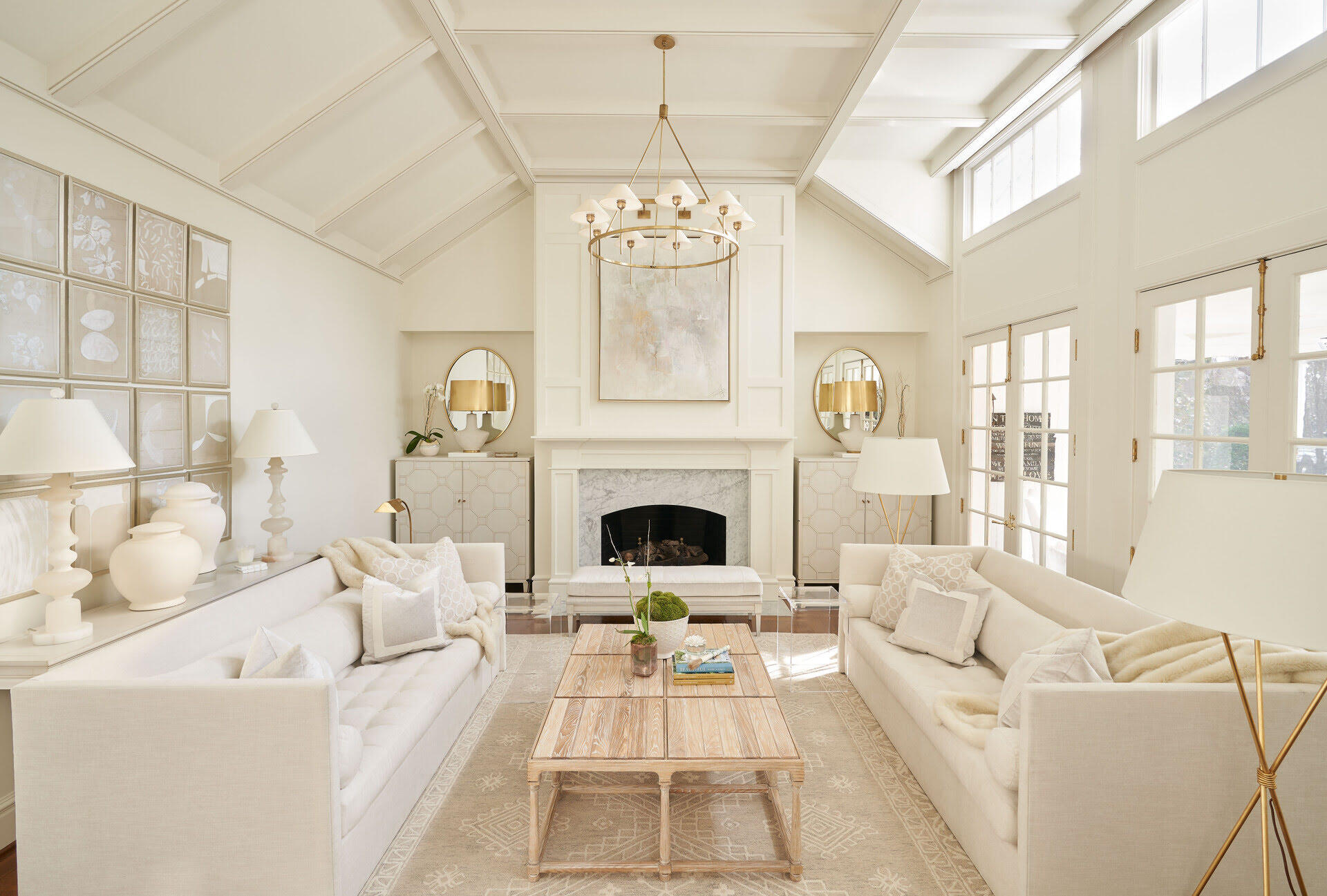

Articles
How Much Does It Cost To Remodel A Living Room
Modified: February 22, 2024
Discover the average cost of remodeling a living room in this comprehensive guide. Get expert tips and advice on articles to help you plan your renovation budget.
(Many of the links in this article redirect to a specific reviewed product. Your purchase of these products through affiliate links helps to generate commission for Storables.com, at no extra cost. Learn more)
Introduction
Remodeling a living room is an exciting project that can transform the look and feel of your home. Whether you’re looking to update outdated features, create a more functional layout, or simply give your space a fresh new look, a living room remodel can breathe new life into your home.
However, before diving into a living room remodel, it’s important to consider the cost. Understanding the factors that impact the cost of remodeling your living room can help you plan and budget appropriately. In this article, we’ll explore the various factors that can influence the price tag of a living room remodel, and provide average cost ranges to give you an idea of what to expect.
So, let’s dive in and explore the factors that can impact the cost of remodeling your living room.
Key Takeaways:
- Prioritize your remodeling goals by identifying the most impactful changes for your living room. Allocate resources to elements that enhance both aesthetics and functionality, ensuring a balanced and budget-friendly remodel.
- Save money on your living room remodel by shopping around for materials and contractors, considering financing options, and making informed decisions. Balance cost with quality to achieve a successful and financially manageable remodel.
Factors that Impact the Cost of Living Room Remodeling
When it comes to remodeling your living room, several factors can influence the overall cost of the project. It’s important to consider these factors before embarking on a remodel, as they can significantly impact your budget and the final outcome of the project. Here are some key factors to keep in mind:
- Size of the Living Room: The size of your living room will play a significant role in determining the cost of the remodel. Larger living rooms will require more materials and labor, which can increase the overall expense. Additionally, if you’re planning to extend or add square footage to your living room, this will also add to the cost.
- Scope of the Remodel: The extent of the remodeling project will also impact the cost. Are you planning on a complete overhaul, including structural changes, or are you simply looking to update the aesthetics? The more extensive the remodel, the higher the cost is likely to be.
- Materials and Finishes: The choice of materials and finishes can greatly influence the cost of the project. Opting for high-end materials, such as hardwood floors or custom-built cabinetry, will increase the overall cost. On the other hand, choosing more budget-friendly options can help keep costs down.
- Labor Costs: The cost of labor will vary depending on your location and the complexity of the remodel. Hiring professionals, such as contractors and interior designers, will add to the overall cost. However, their expertise can ensure a smooth and successful renovation.
- Location and Regional Pricing: The cost of living room remodeling can also vary depending on your geographical location. Certain regions tend to have higher labor and material costs, which can impact the overall expense of the project. It’s important to research local pricing trends to get an accurate estimate.
These factors should be taken into consideration when planning your living room remodel. By understanding and accounting for these variables, you can develop a realistic budget and ensure that your project stays on track.
Size of the Living Room
The size of your living room is a crucial factor in determining the cost of your remodel. Larger living rooms generally require more materials and take longer to renovate, which can significantly increase the overall expense. On the other hand, smaller living rooms may have lower remodeling costs due to their smaller surface area and less labor-intensive requirements.
If you are planning to extend or add square footage to your living room, this will naturally lead to higher costs. Adding extra space involves construction work, potentially including foundation work, framing, and electrical and plumbing modifications. These structural changes require skilled labor and increase both material and labor costs.
When it comes to material costs, larger living rooms require more flooring, paint, wallpaper, and other finish materials. Additionally, if you plan to install features like fireplace mantels, built-in shelving, or entertainment centers, the size of the living room will impact the amount of material needed and subsequently influence the cost.
Furthermore, the size of the living room can affect the complexity of the project. A larger space may require more detailed planning and design efforts, as well as a more intricate installation process for certain elements. This can result in higher labor costs, as more time and expertise will be needed to complete the project.
Considering the size of your living room when budgeting for a remodel is crucial in order to ensure that you plan and allocate your resources accordingly. It’s important to consult with contractors or interior designers to get accurate cost estimates based on the size of your living room, as they will have a better understanding of the materials and labor needed for your specific project.
Scope of the Remodel
The scope of your living room remodel refers to the extent and complexity of the project. It encompasses the specific changes and improvements you plan to make to your living room. Understanding the scope of the remodel is essential in determining the overall cost of the project.
If you’re looking for a simple aesthetic update, such as repainting the walls, replacing light fixtures, or adding new furniture, the cost will be relatively low compared to a more extensive remodel that involves structural changes or major renovations.
Here are some common elements that can affect the scope and cost of the remodel:
- Structural Changes: If you plan on altering the layout of your living room, removing walls, or creating open-concept spaces, a structural remodel will be required. This involves hiring professionals like architects or structural engineers, as well as obtaining permits and complying with building codes. Structural changes can significantly increase the overall costs of the project.
- Electrical and Plumbing Upgrades: If your living room remodel involves rewiring or upgrading electrical systems, adding new outlets or lighting fixtures, or modifying the plumbing layout, the scope of the project expands. These upgrades require the expertise of licensed electricians and plumbers, increasing both material and labor costs.
- Flooring and Wall Treatments: The choice of flooring materials, such as hardwood, laminate, tile, or carpet, can influence the overall cost. Additionally, if you plan to install wall treatments like wainscoting, paneling, or wallpaper, this will add to the scope and cost of the remodel.
- Fixtures and Appliances: Upgrading or adding fixtures and appliances, such as lighting fixtures, ceiling fans, HVAC systems, or smart home technologies, can elevate the scope and cost of the remodel. High-quality fixtures and appliances may come with a higher price tag.
- Custom Builds and Unique Features: If you’re incorporating custom-built elements into your living room, such as built-in shelving, entertainment centers, or fireplace mantels, this will expand the scope of your remodel. Customized features often require skilled craftsmen and can be more time-consuming and expensive compared to off-the-shelf options.
Clearly defining the scope of your living room remodel and having a clear vision of the changes you want to make will help you communicate your goals to contractors and interior designers. They can then provide accurate cost estimates and recommendations based on your specific scope of work. By understanding the scope of the remodel, you can better plan and budget for the project and avoid any unexpected costs along the way.
Materials and Finishes
The choice of materials and finishes for your living room remodel can greatly impact the overall cost of the project. From flooring to cabinetry, each selection contributes to the aesthetics, durability, and functionality of the space. By understanding the different options available and their associated costs, you can make informed decisions that align with your budget and design preferences.
Here are some key factors to consider when it comes to materials and finishes:
- Flooring: The type and quality of flooring you choose can have a significant impact on the cost. Options like hardwood, natural stone, and high-quality tile tend to be more expensive compared to laminate or vinyl flooring. Additionally, the size of your living room and the complexity of the installation can affect the overall cost.
- Walls: The cost of wall finishes can vary greatly depending on the material and design. Traditional paint is generally more budget-friendly, while options like wallpaper, textured finishes, or decorative wall panels can be more expensive. Keep in mind that intricate designs or custom-made wall treatments may incur additional costs.
- Cabinetry: If your living room remodel involves adding or updating cabinetry, the type of material and the level of customization will impact the cost. Higher-end materials, such as solid wood or custom-made cabinetry, will naturally be more expensive than stock options made from composite materials.
- Countertops: If your remodel includes a bar area or built-in shelving, the choice of countertop material will affect the cost. Options like granite, quartz, or marble are more expensive compared to laminate or concrete. The size and complexity of the countertop installation will also influence the final price.
- Lighting Fixtures: The style and quality of lighting fixtures can vary significantly in price. Designer fixtures or fixtures with advanced features may come with a higher cost. It’s important to consider both the upfront cost of the fixtures and the long-term energy efficiency to make an informed decision.
Keep in mind that while high-quality materials can enhance the overall look and value of your living room, they may come with a higher price tag. It’s essential to strike a balance between your design goals and your budget. Researching different materials and finishes, comparing prices, and consulting with professionals can help you make choices that align with your vision and financial constraints.
Read more: How Much Does It Cost To Paint A Living Room
Labor Costs
When planning a living room remodel, it’s important to factor in the cost of labor. Hiring skilled professionals is crucial to ensure that the project is completed efficiently and to a high standard. Labor costs can vary depending on the complexity of the remodel, the size of the living room, and the location of your home.
Here are some key points to consider when it comes to labor costs:
- Contractors: If your remodel requires structural changes, electrical and plumbing work, or the coordination of multiple tradespeople, hiring a general contractor may be necessary. General contractors oversee the entire project, including hiring subcontractors, obtaining permits, and managing the timeline and budget. Their expertise comes at a cost, which is typically a percentage of the total project cost or a fixed fee.
- Construction Crew: Any construction-related work, such as framing, sheetrock installation, or tiling, will require a skilled crew. The cost of labor will depend on the complexity and duration of the work. Some contractors charge a flat daily or hourly rate, while others may provide a project-based estimate.
- Interior Designers: If you want professional assistance with the design and aesthetics of your living room, hiring an interior designer can be beneficial. They can help with space planning, material and color selection, and creating a cohesive look. Interior designers typically charge by the hour or have a flat fee structure, depending on the scope of their involvement.
- Specialized Tradespeople: Depending on the specifics of your remodel, you may need to hire specialized tradespeople, such as electricians, plumbers, or HVAC technicians. These professionals have their own labor rates, which will add to the overall cost of the project.
- Location: The cost of labor can vary depending on your location. Areas with a higher cost of living or a shortage of skilled workers may have higher labor rates. It’s important to research average labor costs in your area and obtain multiple quotes to ensure you are getting a fair price.
When hiring labor for your remodel, it’s crucial to obtain multiple quotes and thoroughly vet potential contractors and tradespeople. Check references, review their past work, and make sure they are properly licensed and insured. Having a clear contract that outlines the scope of work, timelines, and payment terms is essential to avoid any surprises or disputes down the line.
Remember, while it may be tempting to try and cut costs by skimping on professional labor, it can end up costing you more in the long run if the quality of work is compromised. Investing in skilled and reliable labor will ensure that your living room remodel is completed to your satisfaction and within the expected timeframe.
Location and Regional Pricing
Location plays a significant role in determining the cost of a living room remodel. Different regions have varying costs of living and pricing for construction materials and labor. Understanding the regional pricing trends can help you estimate and plan for the expenses associated with your remodel.
Here are some key factors to consider when it comes to location and regional pricing:
- Cost of Living: Areas with a higher cost of living tend to have higher labor and material costs. Cities and metropolitan areas often have increased demand for construction services, which can drive up prices. Take into account the general cost of living in your area when estimating the cost of your living room remodel.
- Regional Suppliers: The availability and cost of construction materials can vary from region to region. If certain materials need to be sourced from locations far from your area, this can incur additional shipping and handling costs. Utilizing locally available materials can help reduce expenses, as they may be more readily accessible and competitively priced.
- Regulations and Permits: Different regions have different building codes, regulations, and permitting requirements. These requirements can vary in complexity and cost depending on your location. It’s important to research and factor in any additional expenses related to permits and compliance with local laws and codes.
- Competition and Market Conditions: The level of competition among contractors and tradespeople can influence pricing. In areas with a high concentration of skilled professionals, prices may be more competitive. On the other hand, if demand outweighs supply, prices may be higher due to limited availability of contractors.
- Economic Factors: General economic conditions can also impact regional pricing. In booming economies, where construction activity is high, prices may be driven up. Conversely, during economic downturns or periods of low construction activity, prices may be more competitive.
To get an accurate estimate of the regional pricing for your living room remodel, it’s recommended to consult with local contractors and obtain multiple quotes. They will have a better understanding of the market conditions and regional pricing trends specific to your area.
Additionally, networking with homeowners who have recently completed similar remodels in your region can provide valuable insights into their experiences and the costs they incurred. Online resources and forums can also provide information about regional pricing averages and trends.
By understanding the impact of location and regional pricing on your living room remodel, you can better prepare your budget and ensure that you allocate funds appropriately for the project.
Average Cost Ranges for Living Room Remodeling
The cost of a living room remodel can vary greatly depending on several factors, including the size of the room, the scope of the project, the materials and finishes chosen, labor costs, and the location of your home. While it’s important to remember that every remodel is unique, here are some average cost ranges to offer a general idea of what you might expect for different types of living room remodels:
- Basic Living Room Remodel: A basic living room remodel typically includes cosmetic updates such as painting the walls, replacing flooring or carpeting, updating light fixtures, and adding new furniture. On average, this type of remodel can range from $5,000 to $15,000, depending on the size of the room and the extent of the updates.
- Mid-Range Living Room Remodel: A mid-range remodel involves more substantial changes, such as replacing flooring with high-quality materials, adding built-in shelving or fireplace mantels, upgrading fixtures and appliances, and incorporating custom elements. The cost for a mid-range remodel can range from $15,000 to $40,000, depending on the size and complexity of the project.
- High-End Living Room Remodel: A high-end living room remodel often includes luxury finishes, high-end materials, and custom features. This can involve structural changes, such as removing walls or creating open-concept spaces, as well as installing custom cabinetry, high-end flooring, and top-of-the-line fixtures. The cost for a high-end remodel can range from $40,000 to over $100,000, depending on the level of customization and luxury elements.
It’s important to note that these cost ranges are averages and can vary significantly depending on your specific project and location. Factors like the cost of labor in your area, the quality of materials chosen, and any unique design elements you incorporate can impact the final cost.
When planning your living room remodel, it’s important to set a realistic budget based on your goals and financial capacity. Consulting with contractors and interior designers can help you get accurate estimates and make informed decisions. Consider obtaining multiple quotes and compare them to ensure you are getting the best value for your investment.
Remember that while cost is an important consideration, it’s also crucial to focus on the quality and long-term value of the remodel. Investing in durable materials, skilled labor, and timeless design choices can contribute to a living room that not only looks beautiful but also stands the test of time.
Basic Living Room Remodel
A basic living room remodel typically involves cosmetic updates to refresh the look and feel of the space. This type of remodel is ideal for homeowners who want a simple and budget-friendly renovation. While it may not involve major structural changes or custom features, it can still make a significant impact on the overall appearance of the room.
Here are some common aspects included in a basic living room remodel:
- Painting: One of the most cost-effective ways to transform a living room is by giving it a fresh coat of paint. Updating the wall color can instantly create a new atmosphere and make the space feel more modern and inviting.
- Flooring: If the existing flooring is worn out or outdated, replacing it can make a big difference in the overall look of the room. Budget-friendly options include laminate or vinyl flooring, while hardwood or high-quality carpeting can elevate the space.
- Lighting: Updating the lighting fixtures can enhance the ambiance and functionality of the living room. Swapping out outdated light fixtures for more modern and energy-efficient options can brighten the space and create a more pleasant atmosphere.
- Furniture: Consider replacing old or worn-out furniture with new pieces that better suit your style and needs. Choosing furniture that maximizes space and provides comfort can improve both the aesthetics and functionality of the room.
- Window Treatments: Installing new blinds, curtains, or shades can add a touch of style and help control natural light in the room. Choose window coverings that complement the overall design and provide privacy when needed.
- Accessories and Decor: Adding decorative elements such as artwork, throw pillows, rugs, and wall decor can tie the room together and add a personal touch. Select accessories that reflect your style and create a cohesive look.
The cost for a basic living room remodel can range from $5,000 to $15,000, depending on the size of the room and the extent of the updates. It’s important to set a budget and prioritize the changes that will have the most significant impact within your financial constraints.
Keep in mind that even a basic living room remodel can greatly improve the functionality and aesthetics of the space. By focusing on simple yet impactful updates, you can create a room that feels refreshed and inviting without breaking the bank.
When budgeting for a living room remodel, consider the cost of materials, labor, permits, and any unexpected expenses. It’s also important to set aside a contingency fund for any unforeseen issues that may arise during the renovation process.
Read more: How Much Does It Cost To Remodel A Basement
Mid-Range Living Room Remodel
A mid-range living room remodel takes the basic remodel to the next level by incorporating more substantial changes and higher-quality materials. This type of remodel is suitable for homeowners who want to transform their living room into a more stylish and functional space without going overboard in terms of cost and complexity.
Here are some key features often included in a mid-range living room remodel:
- Flooring Update: Upgrading the flooring to premium materials like hardwood, engineered wood, or high-quality carpeting can elevate the look and feel of the room. These materials offer greater durability and enhance the overall aesthetics.
- Custom Cabinetry: Installing custom-built cabinetry provides storage solutions and adds a touch of sophistication to the living room. Custom cabinetry allows for personalized design and can maximize space for organizing and displaying items.
- Fireplace Enhancement: Updating the fireplace or adding one as a focal point can bring warmth and character to the living room. Options include a new mantle, built-in shelving, or even converting to a gas or electric fireplace for added convenience.
- Window Upgrades: Installing energy-efficient windows not only enhances the room’s appearance but also improves insulation and helps reduce energy costs. Upgrading to double-paned windows with high-quality frames can provide added comfort and noise reduction.
- Lighting Design: Creating a well-designed lighting scheme can completely transform the ambiance of the living room. Incorporating a combination of ambient, task, and accent lighting fixtures, such as recessed lights, pendant lights, and sconces, can create layers of light and highlight specific areas.
- Upgraded Appliances: If your living room includes built-in appliances like a mini-fridge, wine cooler, or entertainment center, consider upgrading them to enhance functionality and integrate seamlessly with the overall design.
The cost for a mid-range living room remodel can range from $15,000 to $40,000, depending on factors such as the size of the room, the quality of materials, and the complexity of the project. By focusing on these key areas, you can create a living room that combines both style and functionality.
Remember to establish a budget and prioritize the aspects that align with your vision and financial capacity. Consulting with professionals can help you determine the most efficient ways to achieve your desired outcome while staying within your budget.
A mid-range living room remodel offers the opportunity to make significant upgrades and create a space that reflects your personal style, making it a worthwhile investment to enhance your home’s overall appeal.
High-End Living Room Remodel
A high-end living room remodel is the epitome of luxury and sophistication. It involves a complete transformation of the space, incorporating top-of-the-line materials, custom-made elements, and exquisite design features. This type of remodel is perfect for homeowners who want to create a truly exceptional and visually stunning living room.
Here are some key features often included in a high-end living room remodel:
- Structural Changes: High-end remodels may involve significant structural changes, such as removing walls to create an open-concept space or adding architectural elements like archways or decorative columns. These changes can enhance the flow and overall aesthetic appeal of the living room.
- Premium Materials: High-end living rooms feature top-quality materials throughout. This may include exotic hardwood flooring, natural stone countertops, custom-made cabinetry with intricate details, and luxurious wall coverings like silk wallpaper or hand-painted murals.
- Custom-Built Elements: High-end remodels often incorporate custom-built features tailored to the homeowner’s preferences and needs. This could include custom media walls with integrated speakers, built-in bookshelves or entertainment centers, or even a custom-designed wet bar for entertaining.
- Advanced Technology: Integrating state-of-the-art technology can elevate the functionality and entertainment value of the living room. This could involve automated lighting and window treatments, integrated sound systems, or even a home theater system with a large projection screen and surround sound.
- Luxurious Furnishings: High-end living rooms are furnished with high-quality, designer pieces that exude elegance and comfort. This could include designer sofas, handcrafted coffee tables, and carefully selected artwork and accessories to enhance the luxurious ambiance.
- Custom Lighting Design: High-end remodels often include a sophisticated lighting design that emphasizes both functionality and aesthetics. This could include designer chandeliers, recessed lighting with dimming controls, and accent lighting to highlight architectural features or artwork.
The cost for a high-end living room remodel can range from $40,000 to well over $100,000, depending on the size of the room, the level of customization, and the selection of premium materials and finishes. It is important to work closely with architects, interior designers, and skilled craftsmen to ensure every detail is executed flawlessly.
Before embarking on a high-end remodel, carefully consider your budget and consult with professionals to create an effective plan. Remember that a high-end living room remodel is a significant investment that can greatly increase the value and appeal of your home.
With meticulous attention to detail and a focus on exquisite design and craftsmanship, a high-end living room remodel can turn your space into a luxurious sanctuary that reflects your personal style and taste.
Tips for Saving Money on Living Room Remodeling
Undertaking a living room remodel doesn’t have to break the bank. With careful planning and smart decision-making, you can save money without compromising on quality and design. Here are some tips to help you save money on your living room remodeling project:
- Set a Budget and Stick to It: Determine your budget early on and stick to it throughout the remodel. It’s essential to prioritize your spending and allocate funds to the areas that are most important to you.
- Prioritize Your Remodeling Goals: Identify the key elements that you want to focus on during the remodel. By prioritizing your goals, you can allocate resources to the areas that will have the most significant impact and save money on less essential aspects.
- Reuse and Repurpose: Look for ways to reuse or repurpose existing furniture, fixtures, and accessories. Sometimes a fresh coat of paint or reupholstering can give an item a new lease on life, saving you money on new purchases.
- Do It Yourself vs. Hiring Professionals: Assess your skills and determine if there are any tasks you can confidently tackle yourself. Painting, installing simple fixtures, or assembling furniture are examples of tasks that you can save money on by doing them yourself. However, for more complex or specialized tasks, it’s often best to hire professionals to ensure quality and avoid costly mistakes.
- Shop Around for Materials and Contractors: Compare prices from multiple suppliers when purchasing materials to ensure you’re getting the best deal. Similarly, obtain quotes from different contractors and compare their fees and work samples to find the most cost-effective option.
- Consider Alternative Materials: Explore more affordable alternatives to high-end materials. For example, instead of solid hardwood flooring, consider engineered wood or laminate. These options can provide a similar aesthetic at a fraction of the cost.
- Opt for Pre-Designed or Stock Elements: Custom-made elements come with a higher price tag due to the additional labor and materials involved. Consider using pre-designed or stock options for features like cabinets, shelving, or fireplace mantels to save on costs without compromising on style.
- Timing is Everything: Consider the timing of your remodel. Contractors may offer discounts during their slower seasons, and purchasing materials during sales or off-peak times can result in significant savings.
- Reuse Existing Layout: Avoid relocating plumbing or electrical outlets, as these changes can be costly. By keeping the existing layout intact, you can save money on extensive rewiring or plumbing work.
- Consider Financing Options: If your budget is limited, explore financing options that fit your needs. Low-interest loans or credit cards with promotional offers can help you spread out the cost and manage your expenses more effectively.
By implementing these money-saving tips, you can keep your living room remodel within your budget while still achieving the transformation you desire. Remember, saving money doesn’t mean sacrificing quality—it’s about making smart choices, prioritizing your spending, and finding the right balance between cost-effectiveness and design.
Set a Budget and Stick to It
Setting a budget is a crucial step when planning a living room remodel. It helps you determine how much you can afford to spend on the project and ensures that you stay within your financial means. Here are some tips for setting a budget and sticking to it throughout the remodeling process:
- Evaluate your finances: Take a close look at your overall financial situation and determine how much you can comfortably allocate towards the remodel. Consider your income, existing savings, and any other financial commitments you might have.
- Research and gather cost estimates: Research various living room remodeling costs to get a general idea of the average expenses involved. Consult with contractors, interior designers, or other professionals to obtain more accurate cost estimates based on your specific project and preferences.
- Break down your budget: Divide your budget into different categories such as materials, labor, permits, and unexpected expenses. This breakdown will give you a clearer picture of how much you can allocate to each aspect of the remodel.
- Prioritize your spending: Determine what aspects of the living room remodel are most important to you and allocate funds accordingly. Focus on the elements that will have the most significant impact on the overall look and functionality of the room.
- Leave room for unexpected expenses: It’s important to account for unexpected costs that may arise during the remodel. Set aside a contingency fund of around 10-20% of your budget to cover any unforeseen expenses or necessary changes to the plan.
- Research cost-effective alternatives: Look for cost-effective alternatives to high-end materials or labor. For example, consider using laminate flooring instead of hardwood or hiring local contractors with competitive rates. Be open to exploring different options that align with your budget without compromising quality.
- Avoid unnecessary changes: Once you’ve finalized your design and budget, try to avoid making unnecessary changes that can escalate costs. This can include adding extra features or making significant alterations to the original plan. Stick to the initial scope of the remodel to stay within your set budget.
- Track your expenses: Keep a detailed record of all your expenses throughout the remodeling process. This will allow you to monitor and control your spending, ensuring that you stay on track with your budget. Use budget-tracking tools or apps to help you stay organized.
- Communicate with professionals: Maintain open and transparent communication with contractors, designers, and other professionals involved in the project. Clearly communicate your budget limitations and ensure that everyone is on the same page to avoid any unexpected expenses.
- Make informed decisions: Throughout the remodel, make informed decisions regarding any changes or additions. Consider the cost implications and whether they align with your budget. Avoid impulsive choices that can strain your finances.
By setting a budget and sticking to it, you can ensure a more structured and financially manageable living room remodel. It allows you to make informed choices, prioritize your spending, and avoid unnecessary financial stress throughout the process. Remember to be flexible but disciplined when it comes to budgeting, and always keep the big picture in mind: creating a beautiful living room that fits comfortably within your means.
Read more: How Much Does It Cost To Build A Basement
Prioritize Your Remodeling Goals
When embarking on a living room remodel, it’s essential to prioritize your goals to ensure that your design vision aligns with your budget and overall objectives. By determining your remodeling priorities, you can allocate your resources effectively and make informed decisions throughout the process. Here are some tips to help you prioritize your remodeling goals:
- Identify your needs and wants: Start by assessing your current living room and identifying aspects that require immediate attention. Are there structural issues, outdated features, or functional limitations that need to be addressed? Identifying your needs will help set the foundation for your remodeling goals.
- Create a wish list: Make a list of your desired features and enhancements for your living room. Consider elements that will enhance both the aesthetics and functionality of the space. This could include improvements such as updated flooring, additional storage, improved lighting, or new furniture. Be as specific as possible in outlining your ideal living room.
- Evaluate the impact: Assess each item on your wish list and evaluate its impact on your daily life and the overall appeal of the room. Consider how each element aligns with your lifestyle, how often it will be utilized, and the anticipated value it will bring to your living room.
- Consider long-term benefits: Prioritize investments that offer long-term benefits and add value to your home. For example, energy-efficient upgrades such as LED lighting or insulation improvements can provide cost savings in the long run and enhance your home’s energy efficiency.
- Research cost vs. value: Look into the return on investment (ROI) for different remodeling features. Some upgrades, such as kitchen or bathroom remodels, tend to yield higher ROI than others. Knowing the potential value and desirability of certain features can help you make informed decisions when prioritizing your goals.
- Consider both aesthetics and functionality: Strive for balance between aesthetics and functionality in your living room remodel. Look for design choices that not only enhance the visual appeal of the room but also improve its practicality and usability. Prioritize elements that serve dual purposes or add convenience to your daily life.
- Work within your budget: While it’s important to prioritize your remodeling goals, it’s equally crucial to consider your budget. Be realistic about what you can afford and prioritize the projects that fit within your financial means. This will help you avoid unnecessary financial strain and ensure a more manageable remodel.
- Consult with professionals: Seek the guidance of professionals, such as interior designers or contractors, to help you assess your goals and determine the best approach. They can provide valuable insights and offer suggestions based on their expertise and experience.
- Be flexible: It’s important to remain flexible and adaptable in your remodeling goals. As the project progresses, you may encounter unforeseen challenges or need to adjust your plans. Having the ability to be flexible and make adjustments without sacrificing your high-priority goals is key to a successful remodel.
By prioritizing your remodeling goals, you can focus your resources on the elements that matter most to you. This approach ensures that your living room remodel not only meets your needs but also aligns with your budget and vision for the space. Remember, it’s all about finding the right balance between your must-haves and nice-to-haves to create a living room that enhances your lifestyle and brings joy to your home.
DIY vs. Hiring Professionals
When it comes to living room remodeling, one important decision to make is whether to tackle the project yourself or hire professionals. Both options have their benefits and considerations, so it’s essential to evaluate your skills, time availability, and budget to determine which route is best for you. Here are some factors to consider when deciding between DIY and hiring professionals:
- Skill Level and Expertise: Assess your skill level and experience in home improvement projects. If you have prior experience and feel confident in your abilities to handle the specific tasks required, DIY can be a cost-effective option. However, if you lack experience and are unsure about tackling certain aspects of the project, it’s generally advisable to seek professional help.
- Time Constraints: Consider the amount of time you can dedicate to the project. DIY projects require significant time and effort, from planning and sourcing materials to executing the actual work. If you have limited time due to work, family commitments, or other responsibilities, hiring professionals can be a more efficient and time-saving option.
- Complexity of the Project: Evaluate the complexity of the remodel. Some projects, such as structural changes, electrical wiring, or plumbing work, require specialized knowledge and expertise. These tasks are best left to professionals who are trained and experienced in handling them safely and efficiently.
- Safety Considerations: Consider the safety risks involved in the project. Certain tasks, like working with electrical wiring or handling heavy construction materials, can be hazardous if not done correctly. Hiring professionals who are trained in safety protocols and have the necessary equipment can mitigate these risks.
- Cost and Budget: Compare the cost of DIY versus hiring professionals. While DIY projects often come with lower labor costs, it’s important to factor in the potential expenses for tools, materials, and any mistakes or rework that may occur during the process. In some cases, hiring professionals can be more cost-effective in terms of time and overall quality of work.
- Permits and Building Codes: Check whether your remodel requires permits and compliance with building codes. Home improvement projects that involve structural changes or major electrical and plumbing work often require permits from local authorities. Professionals are familiar with these requirements and can navigate the permitting process more efficiently.
- Warranty and Quality Assurance: Hiring professionals often comes with the advantage of warranties and guarantees for the work performed. This offers peace of mind and assurance that any issues or defects will be addressed by the professionals at no additional cost.
- Design and Aesthetics: Consider the level of expertise required to achieve your desired design and aesthetics. If you have a specific vision for your living room and lack the design skills to execute it, hiring professionals, such as interior designers or architects, can help bring your ideas to life and create a cohesive and visually appealing space.
Ultimately, the decision between DIY and hiring professionals depends on your individual circumstances, comfort level, and the complexity of the project. It’s important to be honest with yourself about your skills and abilities before diving into a DIY project. When in doubt, consulting with professionals can provide valuable guidance and ensure a successful and stress-free living room remodel.
Shop Around for Materials and ContractorsWhen undertaking a living room remodel, one of the key ways to save money without compromising on quality is by shopping around for materials and contractors. By taking the time to research, compare prices, and obtain multiple quotes, you can make informed decisions and find the best value for your investment. Here are some tips for shopping around:
- Research Materials: Before purchasing materials, thoroughly research and compare options. Look for different suppliers, manufacturers, and brands that offer the materials you need. Consider factors such as quality, durability, aesthetics, and price to find the best fit for your living room remodel.
- Compare Prices: Once you have identified the materials you want, compare prices from various suppliers and retailers. Check both online and local stores to see if there are any promotions, discounts, or sales that can help you save money. Don’t forget to include shipping costs or additional charges when comparing prices.
- Negotiate: Don’t be afraid to negotiate prices, especially if you are buying in bulk or making significant purchases. Some suppliers may be willing to offer discounts or special deals if you ask. Be polite but firm in your negotiations, and remember that it never hurts to ask for a better price.
- Obtain Multiple Quotes: When hiring contractors, it’s crucial to obtain multiple quotes to compare prices, services, and expertise. Seek recommendations from friends, family, or local trade organizations. Meet with each contractor, discuss your project requirements, and request a detailed written quote that includes all costs associated with the project.
- Consider Experience and Expertise: Price should not be the sole factor when selecting a contractor. Consider the contractor’s experience, qualifications, and expertise in handling similar remodels. Look for reviews and testimonials from previous clients to gauge their professionalism and the quality of their work.
- Ask for References: Request references from contractors and contact their past clients to gain insight into their reliability and workmanship. This will help you evaluate the contractor’s performance, adherence to schedules, and overall satisfaction of their previous clients.
- Review Portfolios and Past Projects: Ask contractors for samples of their past work or a portfolio showcasing their capabilities. This will allow you to assess their craftsmanship, attention to detail, and style compatibility with your remodeling goals.
- Check Licensing and Insurance: Ensure that contractors have the necessary licenses, certifications, and insurance coverage. This protects both you and the contractor in case of accidents or mishaps during the remodeling process.
- Consider Long-Term Value: When comparing materials and contractors, think beyond the immediate cost. Consider the long-term value and durability of the materials, as well as the reputation and reliability of the contractors. Investing in quality materials and hiring experienced professionals can save you money in the long run by minimizing maintenance and repair costs.
- Read and Understand Contracts: Before finalizing any agreements, carefully read and understand the contracts or written agreements with suppliers and contractors. Ensure that all aspects of the project, costs, timelines, and guarantees are clearly stated and agreed upon.
Shopping around for materials and contractors requires time and effort, but it can ultimately save you money and help you achieve the desired outcome for your living room remodel. Remember to balance cost with quality, and do thorough research to ensure that you are making informed decisions that align with your budget and vision for the space.
Consider Financing Options
Financing a living room remodel can be a smart strategy to bring your vision to life without putting excessive strain on your finances. By exploring different financing options, you can ensure that your remodeling project is manageable and fits within your budget. Here are some financing options to consider:
- Personal Savings: Before exploring external financing options, consider utilizing your personal savings to fund the remodel. Using cash or savings avoids potential interest charges and allows you to complete the project without taking on additional debt. However, be sure to preserve emergency funds and leave room for unexpected expenses.
- Home Equity Loan or Home Equity Line of Credit (HELOC): If you have significant equity built up in your home, a home equity loan or HELOC can be an attractive financing option. These options allow you to borrow against the equity you’ve accumulated, using your home as collateral. Interest rates for home equity loans tend to be lower than those for unsecured loans or credit cards.
- Personal Loan: Another option is to secure a personal loan for your living room remodel. Personal loans typically have fixed interest rates and set repayment terms. Shop around and compare rates from different lenders to find the most competitive offer. Ensure that the loan amount and monthly payments fit comfortably within your budget.
- Credit Cards: Credit cards can be a convenient option for financing smaller living room remodels or making smaller purchases for your project. Some credit cards offer promotional periods with zero or low-interest rates for a certain period of time. It’s essential to keep track of your spending and pay off the balance within the promotional period to avoid high-interest charges.
- Vendor Financing: Some suppliers or contractors may offer financing options for their services or materials. These arrangements can provide flexibility and convenience, particularly when working with a single provider for your living room remodel. Be sure to carefully review the terms and interest rates before committing to vendor financing.
- Government Programs or Grants: Depending on your location and the nature of your remodel, you may qualify for government programs or grants designed to assist homeowners with renovations. Research available programs or consult with local housing authorities to see if you qualify for any financial assistance or tax credits.
- General Contractor Financing: Some contractors may offer financing options through third-party lenders. This allows you to finance your remodel directly with the contractor, often with competitive interest rates and convenient repayment plans. Ensure that you carefully review the terms and compare them with other financing options available to you.
When considering financing options, it’s important to evaluate the interest rates, repayment terms, and overall cost of borrowing. Assess your financial capabilities and choose an option that aligns with your budget and long-term financial goals. It’s advisable to consult with financial advisors or loan specialists to understand the potential impact of financing on your overall financial situation.
Remember, responsible borrowing and careful financial planning are crucial to ensure that your living room remodel brings the desired improvements without causing undue financial strain. Choose a financing option that offers flexibility, affordability, and minimal impact on your long-term financial stability.
Conclusion
A living room remodel can breathe new life into your home, creating a space that is both functional and aesthetically pleasing. By considering various factors that impact the cost of remodeling, such as the size of the living room, the scope of the project, materials and finishes, labor costs, and regional pricing, you can better plan and budget for your remodel. Whether you opt for a basic, mid-range, or high-end remodel, it’s important to prioritize your goals, set a realistic budget, and explore cost-saving options along the way.
Throughout the remodeling process, remember to shop around for materials, compare prices, and obtain multiple quotes from contractors. Consider both DIY and professional options based on your skill level, time availability, and the complexity of the project. Additionally, exploring financing options can provide the flexibility needed to complete your living room remodel without straining your finances.
Ultimately, a successful living room remodel is achieved by finding the right balance between your vision, budget, and overall goals. By prioritizing your remodeling goals, shopping smart, and being mindful of costs, you can create a living room that reflects your style and enhances your daily life.
Remember, a living room remodel is not just about making cosmetic changes; it’s an opportunity to create a space that brings joy and comfort to your home. With careful planning, thorough research, and the help of professionals, you can transform your living room into a space that truly reflects your personal taste and enhances your quality of life.
Frequently Asked Questions about How Much Does It Cost To Remodel A Living Room
Was this page helpful?
At Storables.com, we guarantee accurate and reliable information. Our content, validated by Expert Board Contributors, is crafted following stringent Editorial Policies. We're committed to providing you with well-researched, expert-backed insights for all your informational needs.

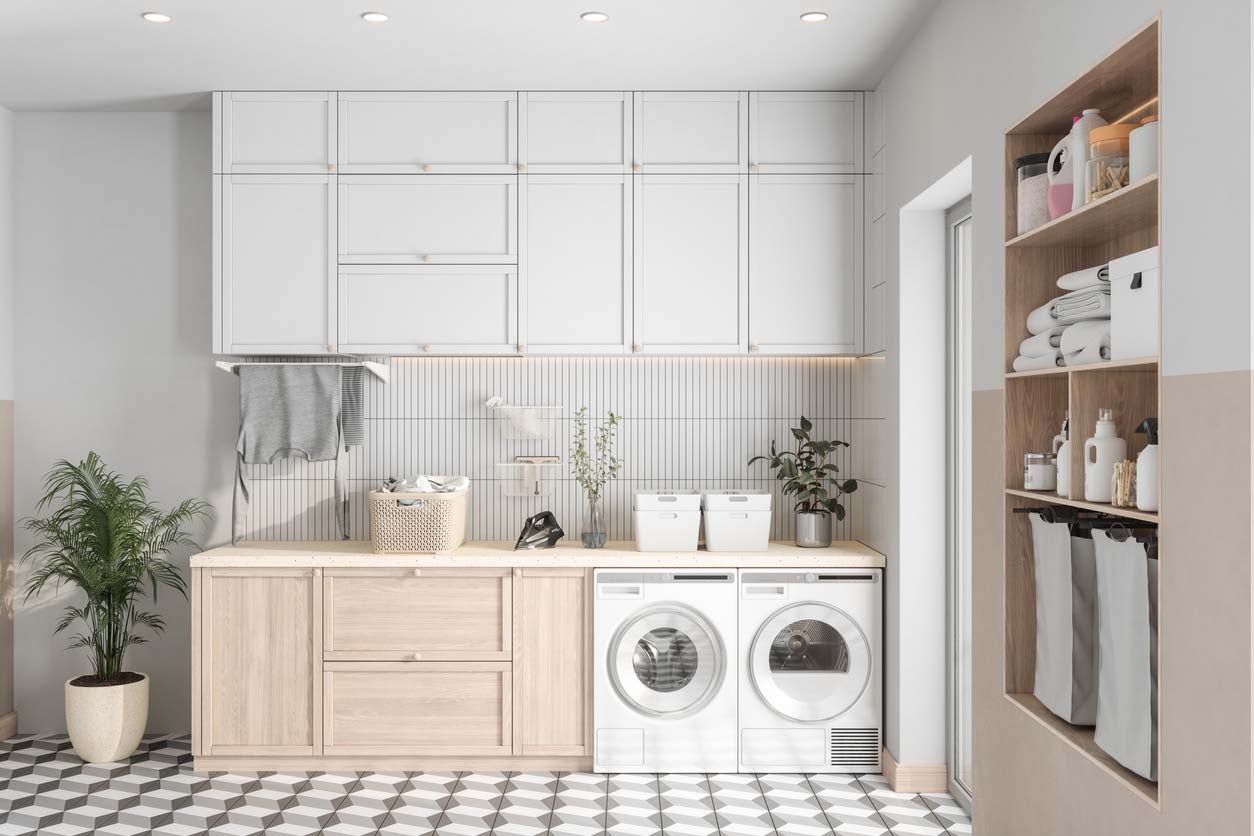


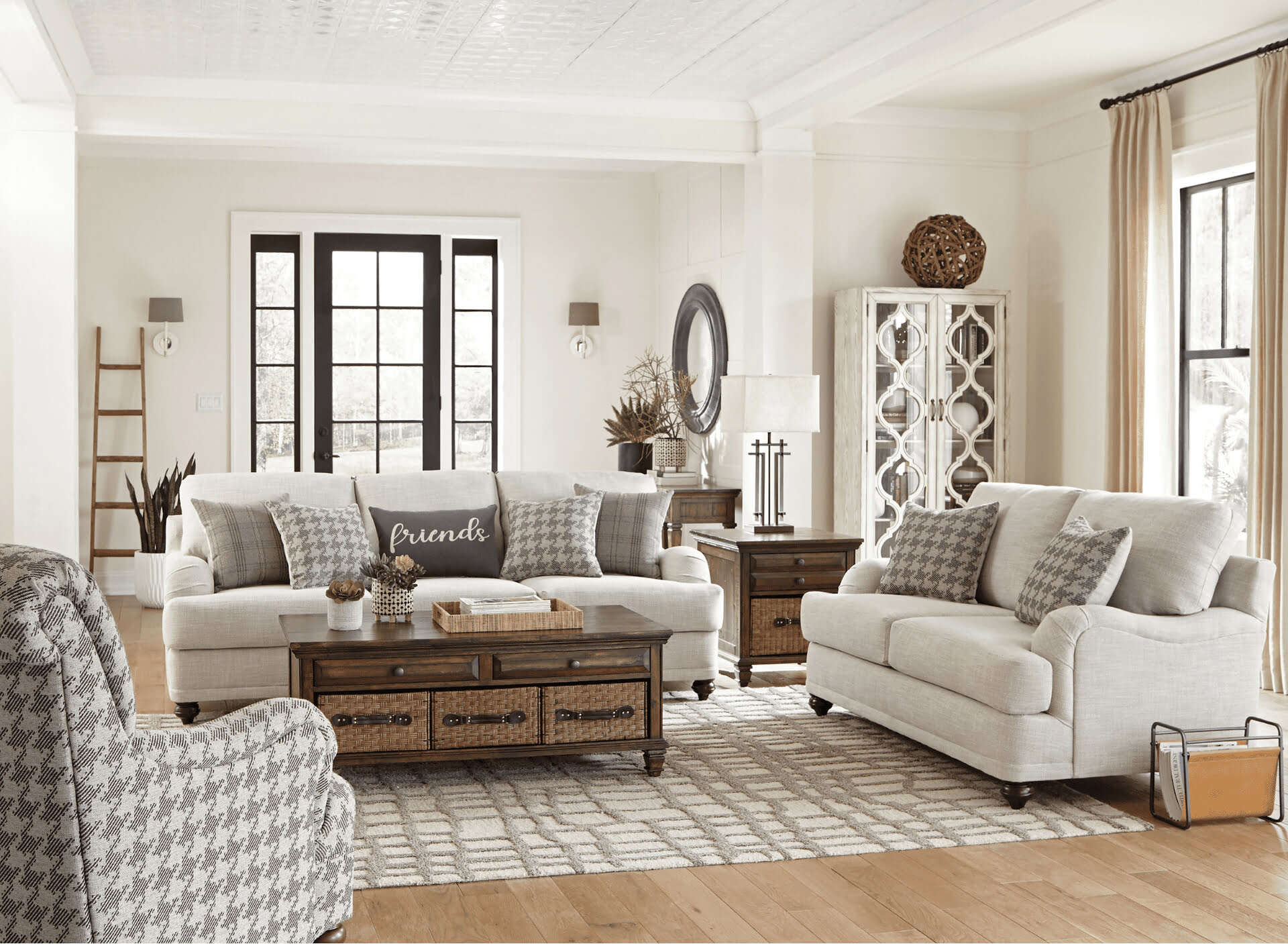

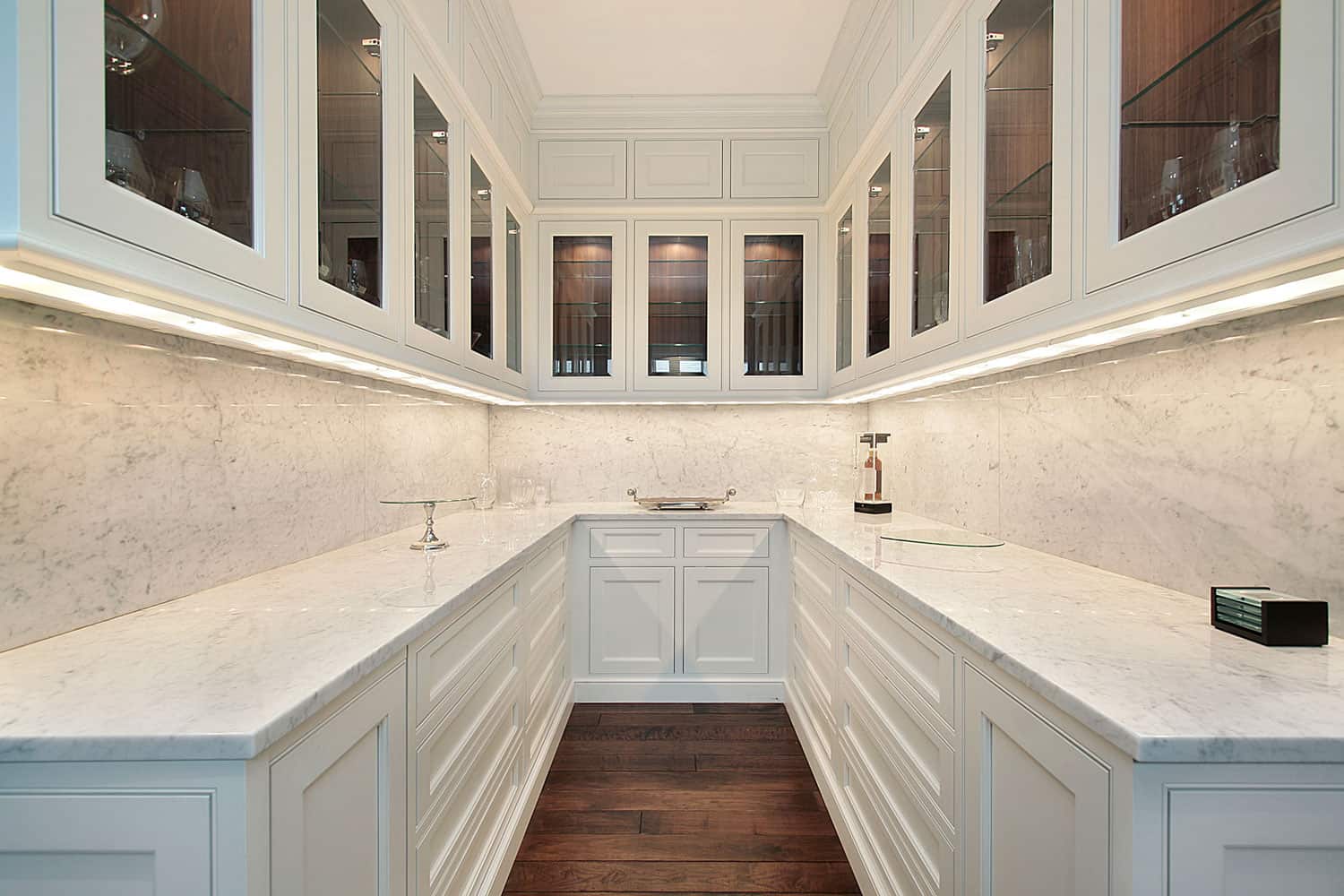

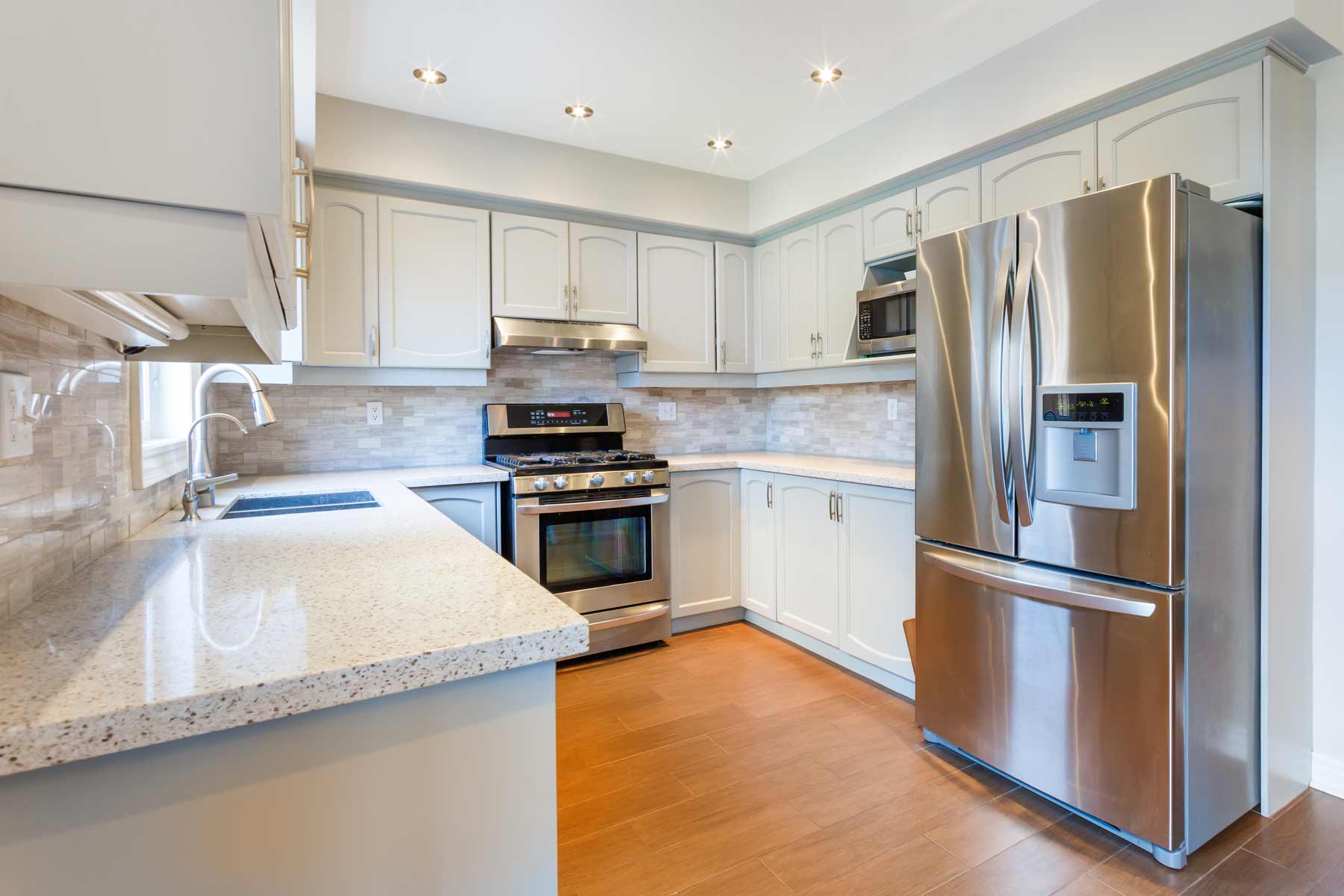



0 thoughts on “How Much Does It Cost To Remodel A Living Room”